12 Companion Plants for Russian Sage (with Pictures)
-

- Last updated:
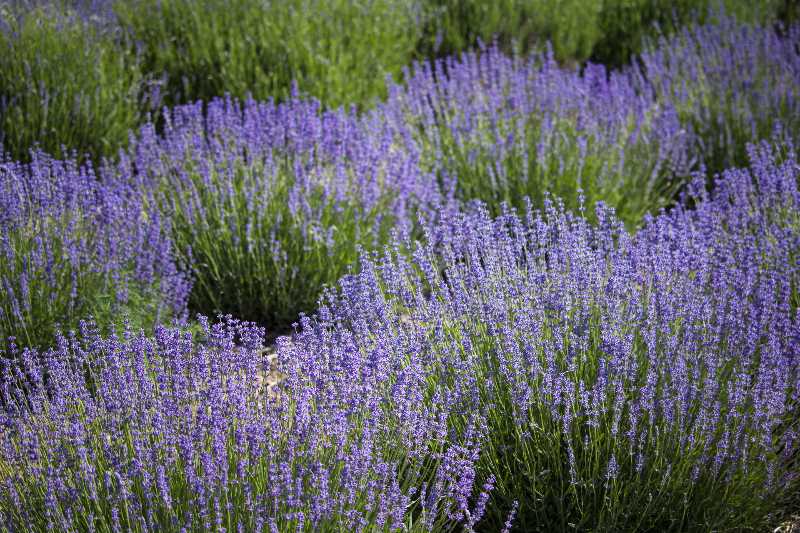
Companion planting is an agricultural practice whereby two or more plant species are grown in close proximity, to facilitate a symbiotic relationship. For example, if you’re planning to grow the Russian Sage, and you’d like to keep pests at bay, you could grow it next to lavender, which is revered for its insect-repelling properties.
Or, let’s assume you’ve noticed that your garden doesn’t get frequent visits from pollinators and other beneficial insects. Companion planting can help you lure them in, to encourage pollination.
At this point, you can obviously tell that today’s post is a special dedication to farmers/gardeners who’ve fallen in love with the Russian Sage species. So, if you’ve been wondering which type of species are best suited to act as Sage’s companion, here’s the list:
The 12 Companion Plants for Russian Sage
1. Sweet William (Dianthus barbatus)
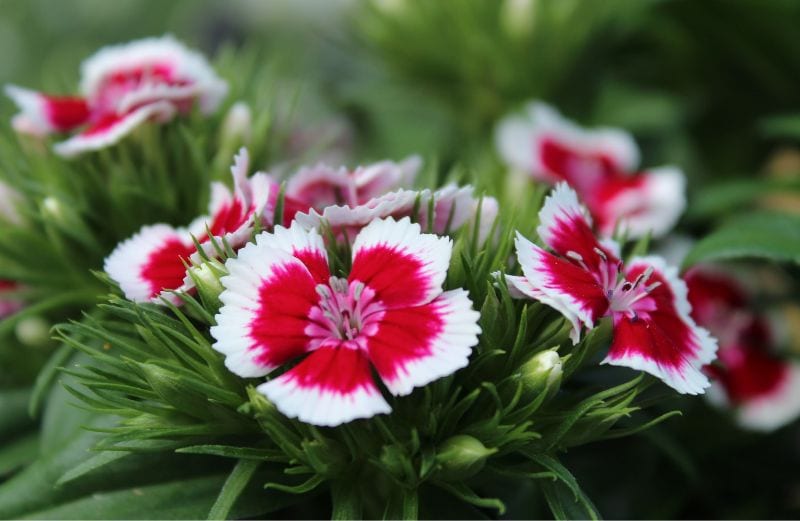
| Flower Color: | Red, White, Purple |
| Plant Type: | Perennial |
Just like the Russian Sage, Sweet William is a perennial plant. The only difference is that farmers prefer growing it as an annual or biennial plant. Should you decide to grow the William as Sage’s companion plant, test your soil to ensure it has a pH that falls between 6.0 and 8.0, is rich in nutrients, and is well-drained.
If the nutrients are lacking, add peat moss, green manures, aged animal manure, or any other type of organic matter that you could think of.
The William seeds are to be sowed 12 to 18 inches apart. And the best season to plant them is during spring when the chances of them dying from frost is zero. The only issue is, they are late bloomers, as they rarely bloom in the same season that they were planted. But the good news is that the flowers often demand little to no care at all.
2. Milkweed (Asclepias)
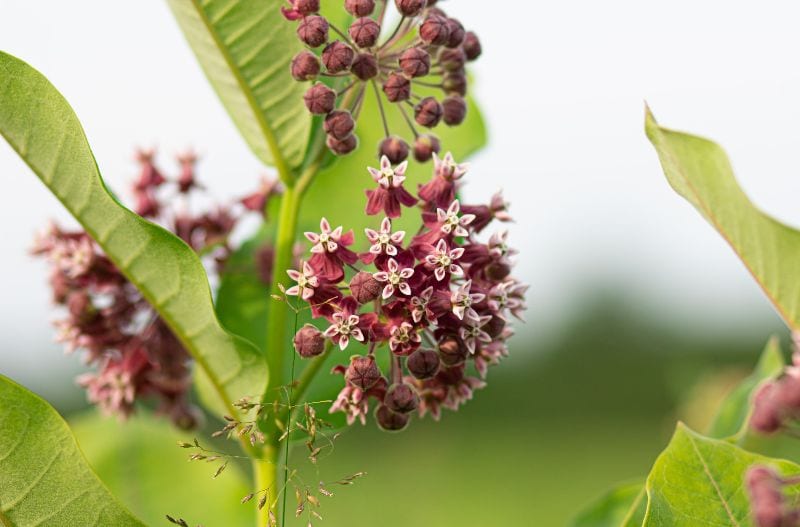
| Flower Color: | Red, Orange, White, Pink, Green, Purple |
| Plant Type: | Perennial |
Remember when we glossed over how you can lure pollinators to your garden? Well, the Milkweed species is so good at that job—especially if you’re into butterflies, specifically the Monarch species.
That species is sometimes referred to as the milkweed butterfly because the Asclepias has always been its one and only host plant.
The problem with the Milkweed is, even though it’s an incredible companion for the Russian Sage, it’s toxic to dogs and cats.
3. Phlox (Phlox paniculata)
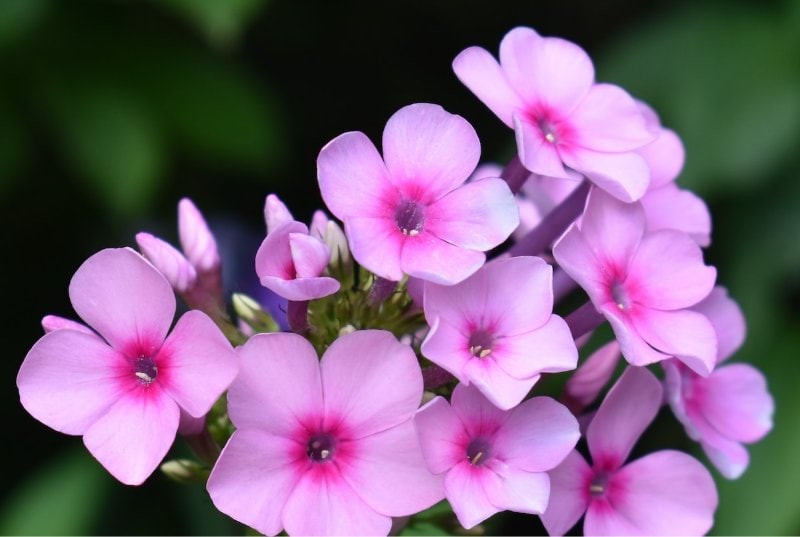
| Flower Color: | Pink, Lavender, Orange, Purple |
| Plant Type: | Perennial |
The Phlox is popular around the world due to its long flowering season. It normally starts to bloom during the first days of spring and keeps on blooming even while other flowers are dying in fall. From our observations, their excellent ground cover is what makes them suitable companions for the Russian Sage. What’s more, they are relatively easy to plant and care for.
Gardeners who live in areas that experience less than an inch of rain in a week are advised to water it regularly and to apply a thin compost layer as spring approaches. Moreover, the Phlox species has to be spaced out at least 2 feet apart.
If you’ll be transferring them from a pot or container to the garden, make sure the holes are dug wide and deep. Ideally, they should be twice the size of the pot.
4. Purple Coneflower (Echinacea)
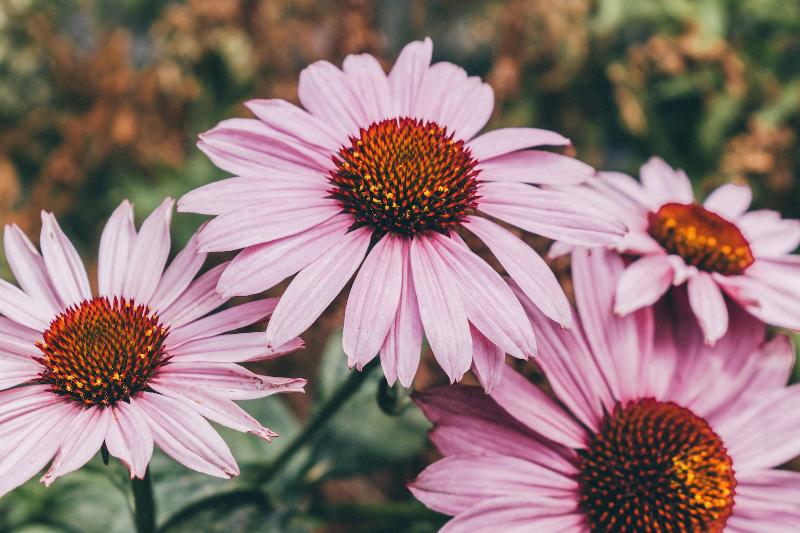
| Flower Color: | Purple |
| Plant Type: | Perennial |
This plant is a medicinal herb that’s not only popular on the North American continent, but also around the world. Throughout history, we’ve seen physicians apply it as the panacea to various infections, such as diphtheria and syphilis.
This current generation might not be as well-acquainted with the species as the older generation was, because its application started declining with the introduction of antibiotics in the 18th century.
For the record, bees and several other pollinators love the Purple Coneflower as much as we do. And seeing as the plant can thrive in similar conditions as the Russian Sage, we don’t see why you shouldn’t give it a shot. The only drawback is, they tend to occupy too much space and compete for soil nutrients.
To avoid this, you can plant it several feet away from your Sages.
5. Petunia (Petunia exserta)

| Flower Color: | Rose, White, Yellow, Red, Purple |
| Plant Type: | Annual/Perennial |
The seasonal groundcover is what makes Petunia one of the best companions for the Russian Sage. Then again, that’s not the main reason why most farmers plant it, as it’s known to cure a few digestive disorders, common colds, and coughs. This species also has a unique aesthetic and is available in different hues. If you’re into red, pink, white, purple, or blue, this is the plant to go for.
Fun Fact: In the Maya and Inca community, it’s believed that this species has the ability to shield anyone against evil spirits and monsters. And if the plant grows closer to your home, they believe you’re someone who’s full of positive energy.
6. Red Hot Poker (Kniphofia)
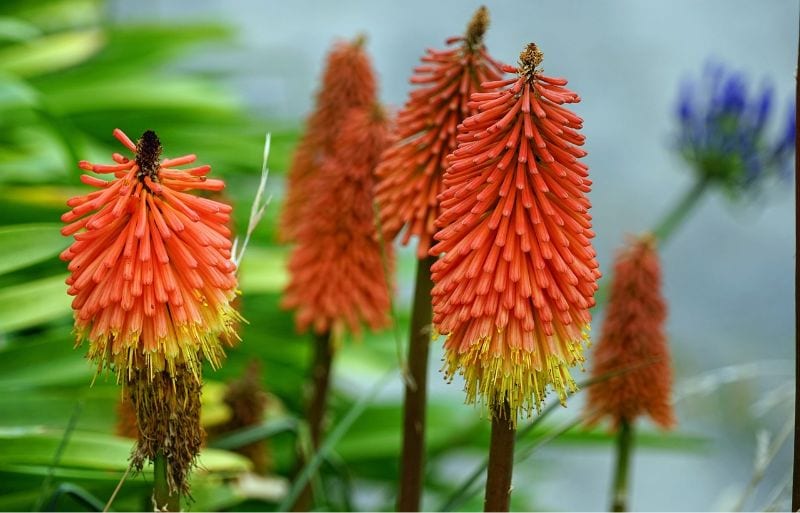
| Flower Color: | Red, Yellow, Green, Orange |
| Plant Type: | Perennial |
These herbaceous perennials are sometimes called “torch lilies” because they often display some of the traits that the lilies have. But they are not part of the Liliaceae family or share a genetic makeup. This plant is native to Africa, and we currently have more than 60 species in its genus.
Butterflies, bees, and hummingbirds like spending time around them, and that’s great for plants like the Russian Sage, which heavily rely on entomophily (insect pollination) and ornithophily (bird pollination). It’s worth noting that this plant is rhizomatous in nature, and happens to be an aggressive grower.
A rhizome is a species that grows its stem across the soil surface. This is a survival tactic, as it enables it to hoard more proteins and carbohydrates to help it survive harsh weather elements.
7. Red Salvia (Salvia splendens)
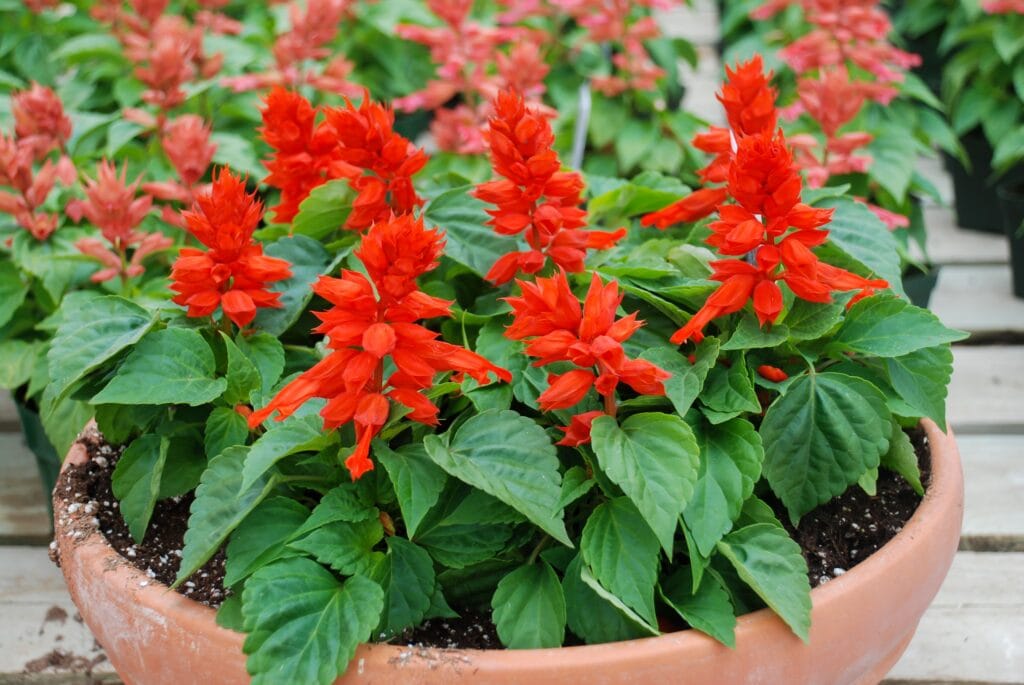
| Flower Color: | Red |
| Plant Type: | Perennial |
The Red Salvia is commonly known as the “Scarlet Sage,” but we prefer calling it the “Blood Sage.” It’s native to Brazil and popular among container gardeners who prefer working with plants that offer vertical accents. An accent species is any type of plant that acts as a focal point in an indoor or outdoor space.
The Blood Sage has attractive flowers and foliage that can easily lure different pollinators to your farm or backyard garden. It can only thrive in regions that experience 6 to 8 hours of direct sunlight every day and have well-drained soil. By the way, it has a knack for surviving soils that aren’t rich.
8. Daylilies (Hemerocallis lilioasphodelus)
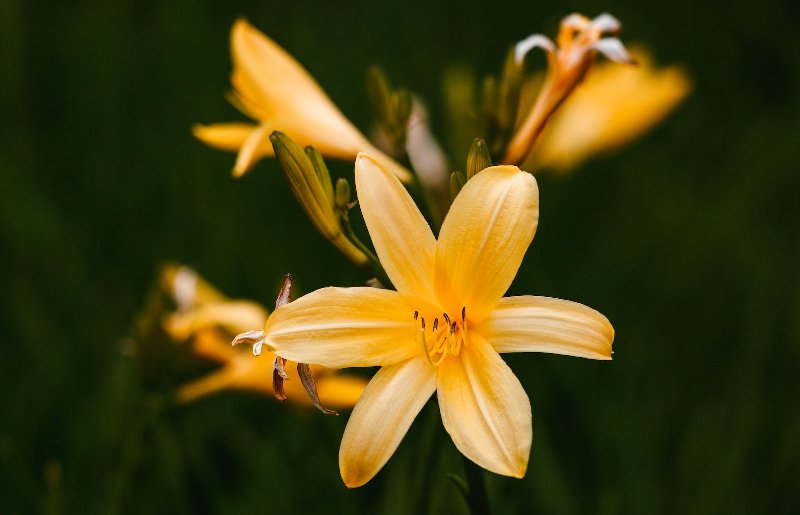
| Flower Color: | Purple, Pink, Orange, Red, Cream |
| Plant Type: | Perennial |
Daylilies are perennial as well, and one of the toughest plant species on the planet. As a matter of fact, that’s the reason why you constantly see them being planted along our interstate roadsides. The best time to start sowing the seeds is during spring (towards the end of the season) or early fall.
Most farmers prefer growing Daylilies from seeds rather than seedlings because the seeds can be sown directly in the ground and survive in most climates.
We’ve learned that the plant is a popular staple in most Asian homes, owing to the fact that they offer more protein and vitamin C nutrients compared to green beans. Just don’t feed it to the cat. It seems like our feline babies find them to be very toxic, seeing as they may cause kidney failure, ultimately leading to death.
9. Hebe (Veronica sect)

| Flower Color: | Purple, Pink, White |
| Plant Type: | Perennial |
No, we’re not referring to Hebe the goddess of youth, but the group of plants. You’ll find about 90 species in this family, most of which are native to South America, French Polynesia, New Zealand, and the Falkland Islands.
The Hebe usually demands two things: free-draining soil, and more than 6 hours of sunlight. They are considered hardy in nature and can be propagated in containers. If you’re going to plant a Hebe as a companion plant, you’ll have to factor pruning into your maintenance schedule. And they all have to be pruned once all their flowers have faded.
10. Mexican Hat (Ratibida columnifera)
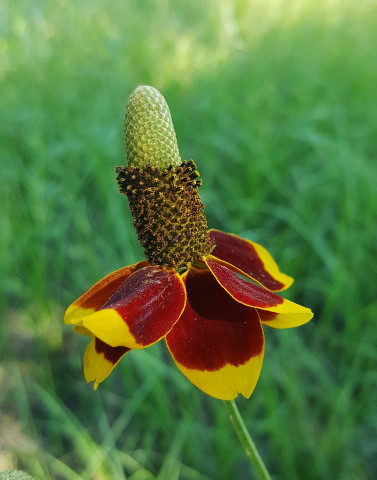
| Flower Color: | Mahogany-red |
| Plant Type: | Perennial |
The Hat species also goes by the name of Thimble-Flower or the Prairie Coneflower. It’s a tall plant variety that usually produces cones, which are surrounded by drooping petals. From a distance, or if you squint your eyes a little bit, you’ll realize it sort of looks like a person wearing a sombrero. That’s why they’ve dubbed it the “Mexican Hat.”
It’s no surprise that the Hat is very easy to grow, considering the fact that it’s a wildflower with a high degree of resistance to drought. All it needs is well-drained soil and adequate sunlight.
Crowding out weaker plants is the only problem that you’ll have to deal with, should you grow this species as your Sage’s companion.
11. Black-Eyed Susan (Rudbeckia hirta)

| Flower Color: | Golden, Orange, Bicolor |
| Plant Type: | Perennial |
The Susan has a daisy-like flower head that’s 2 to 3 inches in diameter, and a center that’s dark brown to purple. It belongs to the Asteraceae taxa family, which is popular for hosting other well-known species such as the dandelion, artichoke, lettuce, and daisy.
Plants found in this family have been used for generations to treat various illnesses, and the Black-Eyed Susan is no different. Our forefathers and mothers used it to cure parasitic infections and manage several other ailments, as we are now. Although it’s not toxic to humans, people who are susceptible to asthma attacks are always advised to avoid them.
The Russian Sages do appreciate their company because they produce lots of nectar that attract bees and different species of butterflies.
12. Tickseed (Coreopsis gigantea)
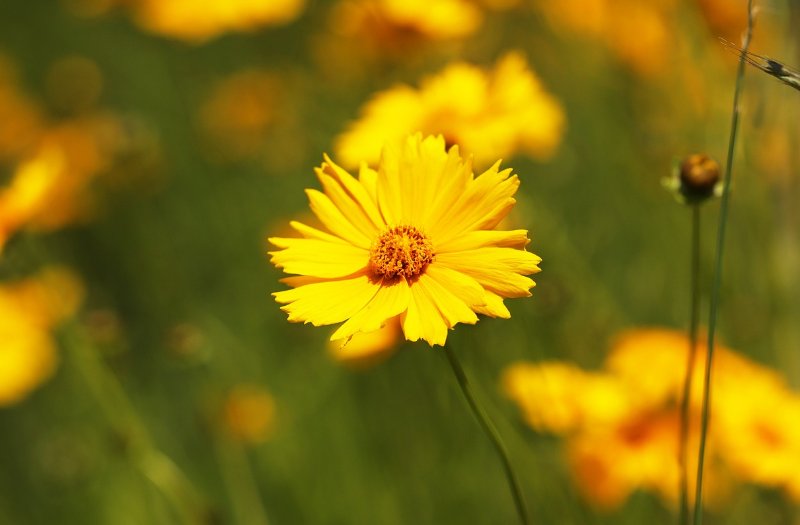
| Flower Color: | Yellow, Orange, Red, Pink, White |
| Plant Type: | Perennial |
The Tickseed species usually offers a little bit of everything to everybody. We have close to 80 different varieties of the plant, meaning you can work with a long-blooming flower species, one that’s drought resistant, or a variety that demands practically nothing in the maintenance department. And just like the Black-Eyed Susan, they are all part of the Asteraceae family.
Besides the fact that they are very colorful—their flowers are either pink, white, red, yellow, or orange—they also have daisy-like flowers that produce lots of nectar. More nectar equates to frequent visits from pollinators, which makes it a great companion to the Russian Sage.
With the Tickseed, you can either go with the perennial variety or the annual group. If you choose to go with the former, you’ll have to wait for an entire year for it to start blooming. But for the annual variety, you’ll start seeing flowers during the first month of summer.
Worst Companion Plants for Russian Sage
Unfortunately for the Russian Sage, it doesn’t get along with all plants. So, if you’d like to boast of having a healthy garden, we’d advise you to avoid planting the following species next to it:
- Cucumbers: Any time a cucumber grows next to an herb, they both end up grappling with stunted growth. And as you all know by now, the Russian Sage is a flowering herbaceous perennial plant that perfectly fits into that category. If you’re looking for the best companion for your cucumbers, try radishes, catnip, or nasturtiums.
- Rue: This species has the same effect as the cucumber when planted next to the Russian Sage. But the rue is even worse because it doesn’t also like sharing spaces with basils or cabbages.
- Fennel: Quite frankly, this shouldn’t come as a surprise, considering fennel has always been categorized as allelopathic to most plants. It will not only stunt the growth of your Russian Sage but also compel it to bloom too early.
- Alliums: The Russian Sage does well in soils that are well-drained. Alliums, on the other hand, prefer soils that are moist. It doesn’t take a genius to figure out how incompatible these two are.
Wrapping Up!
If you’re going to plant the Russian Sage, do it during spring. And since this species really loves the sun, try to avoid shady sites. Also, the soil has to be on the grittier side to facilitate good drainage. They don’t like boggy or acidic soils, meaning you’ll have to check beforehand that the conditions are alkaline. With regards to spacing, the plants have to be 24 inches apart to leave enough room for the eventual wide growth.
Featured Image Credit: PxHere
Contents

